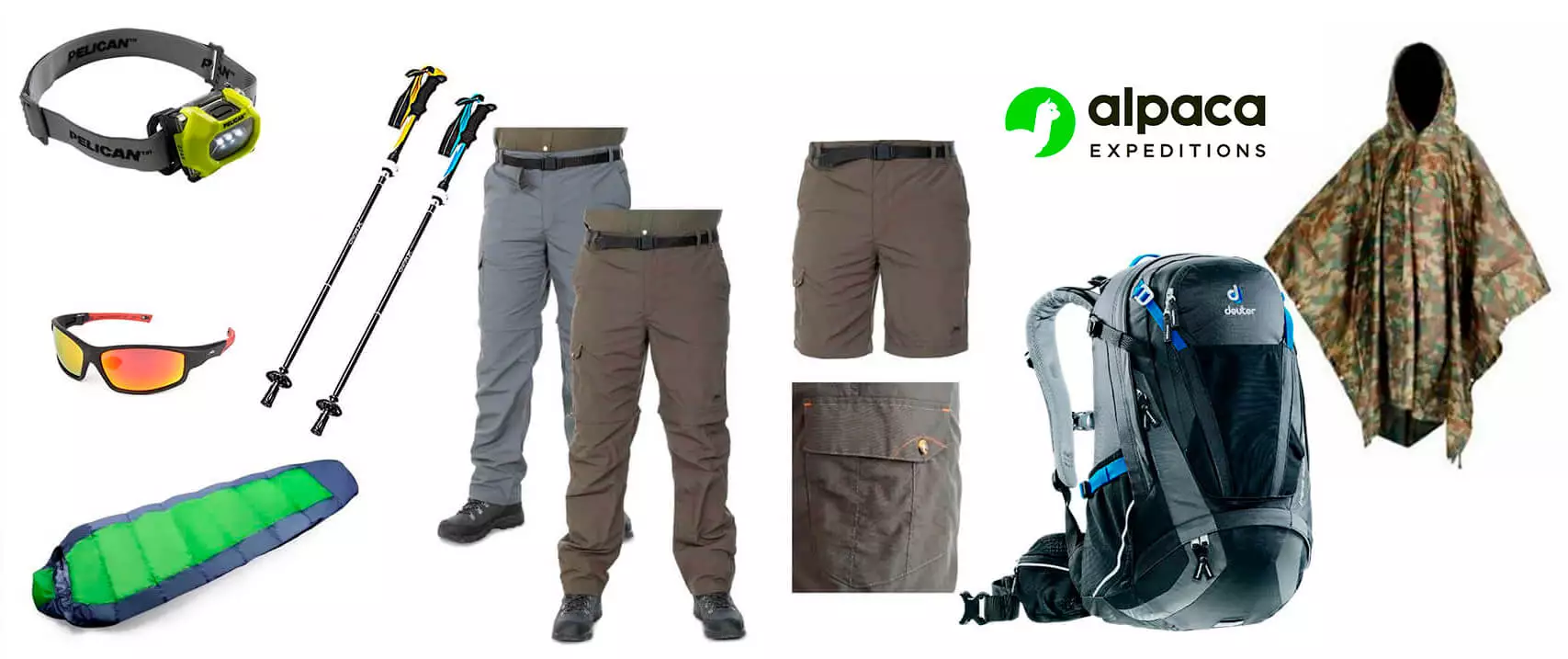A Guide to Hiking to Machu Picchu
Details
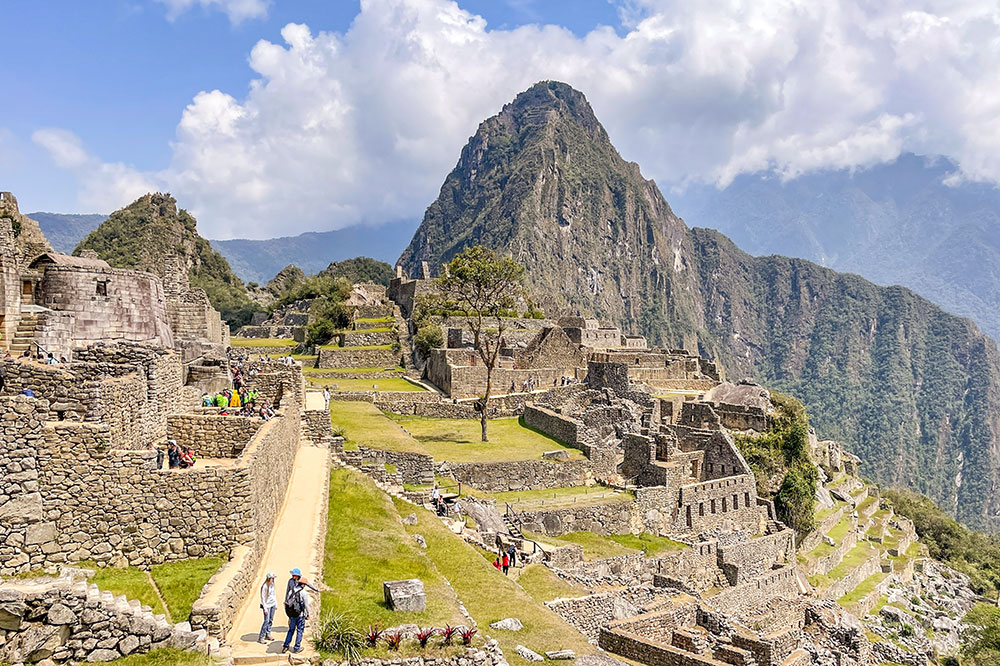
A hike to Peru’s ancient city of Machu Picchu is sure to be one of the most memorable adventure experiences in your lifetime. This handy guide answers the top questions hikers, (and non-hikers) have about hiking to Machu Picchu, and how to prepare for the trip, and what to expect in the marvelous region of Machu Picchu.There are actually many hikes in the Peruvian Andes that also include a trip to Machu Picchu, but there is only one hiking trail, the historic self-named Inca Trail, that you can hike all the way to, and through, the Sun Gate entrance of Machu Picchu. All the other hikes, (also often called treks) actually end the hiking part of the trip at Aguas Calientes, the little town that is the gateway to Machu Picchu. From there, visitors (hikers and non-hikers) alike can take a bus up to this UNESCO World Heritage site. Machu Picchu is also known as the lost city of the Incas.
This guide focuses on the classic Inca Trail hike that goes all the way to Machu Picchu. We share in-depth information about Machu Picchu, what hiking in Peru (also called trekking) is like, and our natural environment that hikers experience. We invite you to learn all about Hiking to Machu Picchu on the Inca Trail – let’s go!
About Machu Picchu, Peru - One of the World’s Seven Wonders
Machu Picchu is a 15th-century ancient Incan society situated almost 2500 m above sea level – roughly 8000 feet. Nestled among the Andes mountains in the Cusco region in Peru, Machu Picchu attracts as many as 5,000 people a day during the high season between May and October, with about 1 million people visiting the site yearly. (pre-covid).Machu Picchu is a UNESCO World Heritage site, spanning 32,592 hectares (80,537 acres) of lush mountains and valleys. Typically, when people think of Machu Picchu, the iconic archeological monument La Ciudadela de Machu Picchu (City of Machu Picchu) comes to mind. Made of approximately 200 structures, the ancient Incan stone terraces are full of religious, ceremonial, astronomical and agricultural history.
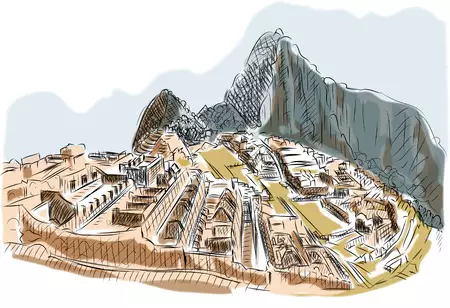
Why Machu Picchu is Called the “Lost City of the Incas”
Machu Picchu is often called the “Lost City of The Incas.” Located in the Cusco region of Peru, it is one of the most impressive ancient sites in the world. An icon of the Inca civilization, it is a popular stop on many Peru tours.Constructed around 1450 AD, at the height of the Inca Empire, it was built as an estate for the Inca Emperor Pachacuti. However, the site was mysteriously abandoned approximately 100 years later, though it is suspected the Incas left because of the arrival of the Spanish. Rediscovered (by the outside world) almost 500 years later, in the early 20th century, Machu Picchu soon became a popular tourist destination. The descendants of these ancient Incas did know of Machu Picchu – for that is how Hiram Bingham “rediscovered” it!
The name “Lost City of the Incas” comes from the civilization’s modern day “re”-discoverer, Hiram Bingham In 1909, the American explorer set out to retrace the steps of Simon Bolivar and follow the old trade route from Buenos Aires to Lima. After hearing rumors about “the last resting place of the Incas” on the trip, Bingham returned two years later in search of it on foot and by mule. A local farmer tipped his party off to ancient ruins on a nearby mountain top, and soon the explorer was, in his own words:
…confronted with the walls of ruined houses built of the finest quality of Inca stonework. It was hard to see them for they were partly covered with trees and moss, the growth of centuries, but in the dense shadow, hiding in bamboo thickets and tangled vines, appeared here and their walls of white granite ashlars carefully cut and exquisitely fitted together. . . . Dimly I began to realize that this wall and its adjoining semicircular temple over the cave were as fine as the finest stonework in the world. It fairly took my breath away.
How to Get to Machu Picchu: Train, Bus, and Hiking
Most tourists actually make it to Machu Picchu via train, not via hiking the ancient Inca Trail itself. The majority of tourists take the train to Aguas Calientes from either Poroy (closest train station to Cusco) or Ollantaytambo, then take a bus up the switchbacks to the ancient site of Machu Picchu. Regardless of which station you leave from, the trip is about 4 hours from Cusco to Aguas Calientes. For those looking for a little more hardy adventure and incredible time in the Andean mountains, a hike from the Sacred Valley outside Cusco, Peru to Machu Picchu allows visitors to walk the same footpath and carved stone steps as the Incas themselves. The full hike up the mountain via the Inca Trail is 25 miles/40 kilometers and takes about four to five days, but you can also do only part of the Inca Trail hike in two days, if you are short on time or not a big hiker. This is a really great option for many people who still want to experience hiking on the historic path, but just aren’t cut out for four or 5 days of trekking, even with exceptional campsites and gourmet camp meals.
For many, traveling on the Inca Trail is a once-in-a-lifetime experience. The enchanting mountain vistas and valleys are visually arresting. Yet, knowing that one is hiking in the footsteps of ancient peoples can only give one pause to reflect upon centuries past and the timeless majesty of the place. Alpaca Expeditions features expert, experienced, multi-lingual, local guides who have a wealth of information to share about the trail, the ancient Incas who built Machu Picchu and the overall Andean landscape that is impressive, to say the least. In fact, the guides of Alpaca Expeditions are the descendants of these ancient Incas!
Inca Trail Permits – What They Are and Why Hikers Must Have Them
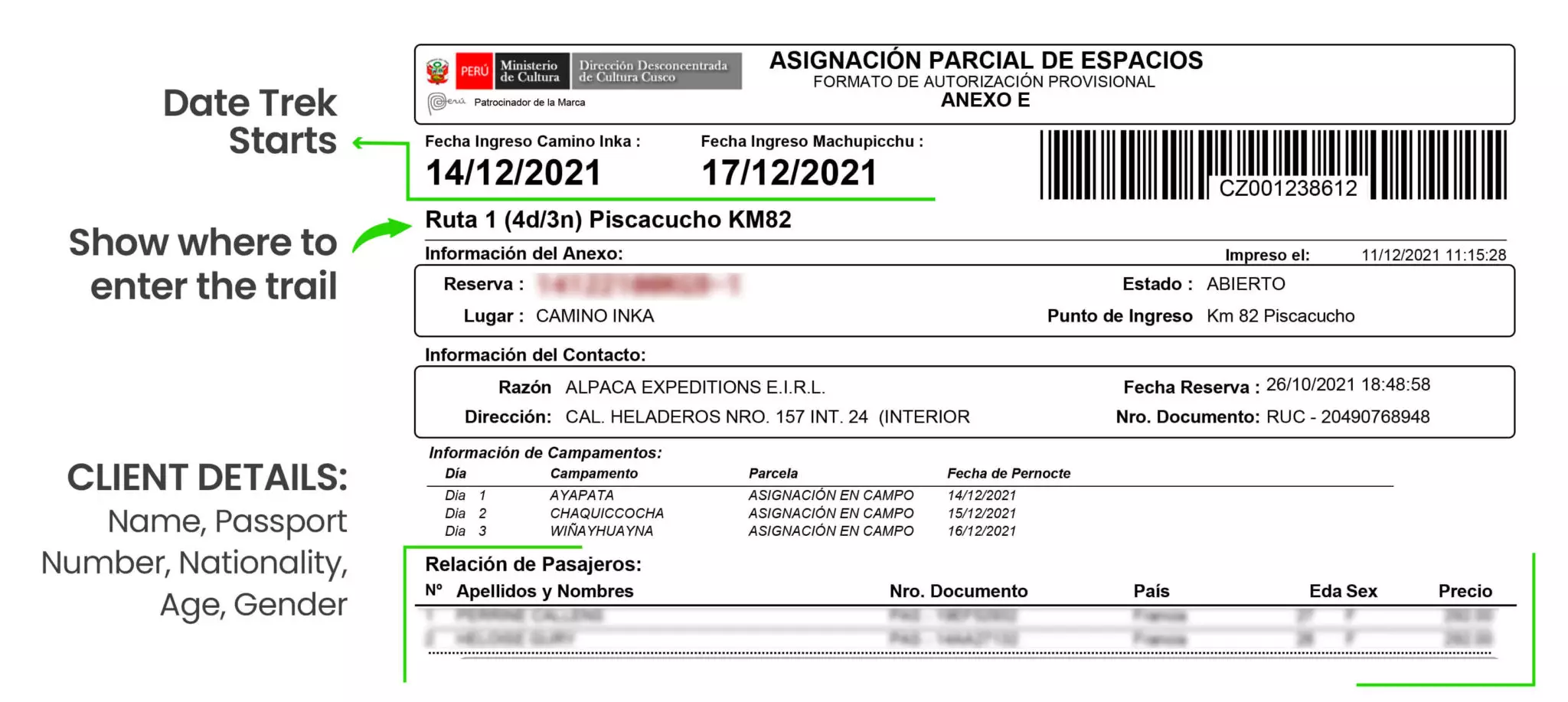
The Inca Trail Permit System was created by the Peruvian government to help prevent serious overcrowding, overuse, and erosion on the historic Inca Trail. A limited number of total permits are available each day to hike the Inca Trail. Permits are required for all hikers – including porters, guides, and trekking customers, meaning dates sell out 3 to 6 months in advance (especially during the most popular months for seeing Macchu Picchu, May through August). Alpaca Expeditions has a 99% success rate at helping customers get the permit dates they want, with advance planning
How Hard and How Long is the Hike to Machu Picchu?
Longest Day is ~10 Miles of Hiking
A hike to Machu Picchu is sure to be one of the best outdoor adventures in your lifetime. Don’t let the experience be ruined by being under-prepared! The full trail to Machu Picchu takes four to five days, takes you over rivers and mountain passes. Through Alpaca Expeditions, your longest day will be around 10 miles. Thankfully, our amazing porters will be carrying the bulk of your gear, lightening your load and making the entire trek much more accessible to trekkers of various fitness levels.
Tips on Physical Preparation to Successfully Hike the Inca Trail
That being said, physical preparation for this hike will go a long way. Step machines at gyms, jogs, and aerobics of some sort will help prepare you physically (and mentally) for the adventure ahead. A 30 minute or so jog everyday a week before the hike will make things go a lot more smoothly when the time comes.Spending a day or two in Cusco after the trek to recuperate would be ideal too. They can offer cheap massages for those sore muscles!
High Altitude and Acclimatization Tips for Hiking to Machu Picchu
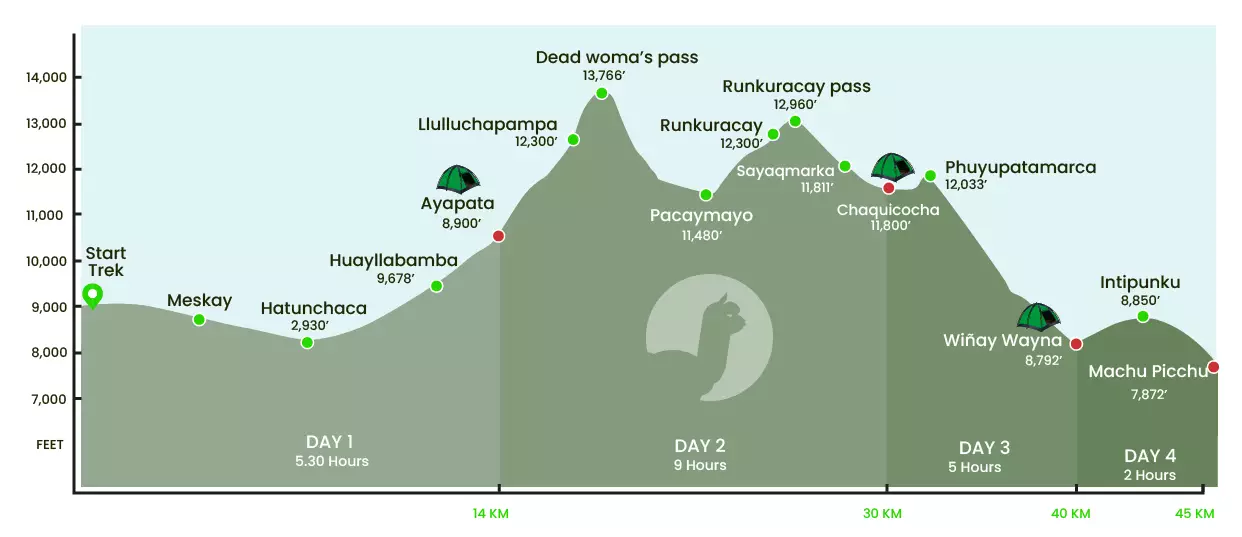
Some other difficulties that hikers deal with are high elevations/altitude sickness and the large stone steps that make up the trail. Altitude sickness symptoms involve getting out of breath very fast and mild headaches. The highest point on the Inca Trail is 4200 meters/13,779 feet. All these symptoms will pass after some time with rest. As for the large stone steps, there is no rush! The steps might throw off your hiking rhythm a bit, but taking the time to enjoy the beauty surrounding you will get you to Machu Picchu just the same. The elevation of Machu Picchu is 2430 meters/7,992 feet. The best way to prepare yourself is to arrive in Cusco (altitude 3399 meters/11,152 feet) two days early, and take a tour to get out and about – thus helping your body adjust to the altitude a bit before you start your hike to Machu Picchu.
Best Packing List for Hiking to Machu Picchu
The final step of preparation is packing your bag. We’ve got you covered with the Ultimate Packing List for trekking the Inca Trail. But the gist is, bring layers of clothing for inevitable changes of temperature that comes with elevation gain and loss, a waterproof jacket or other form of rain protection, and a comfortable day pack. Other miscellaneous items you don’t want to forget include toiletries, good hiking shoes (and extra socks), flashlights, and a good sleeping bag for chilly mountain nights. You can rent very high quality, top adventure brand trekking poles, sleeping bags, and sleeping pads from Alpaca Expeditions – which is totally recommended so that you don’t have to lug your own gear. Insiders Tip – bring your own silk or cotton sleeping bag liner for a great night’s sleep. They are super small and light to pack, and a real pleasure to have on your trek!
